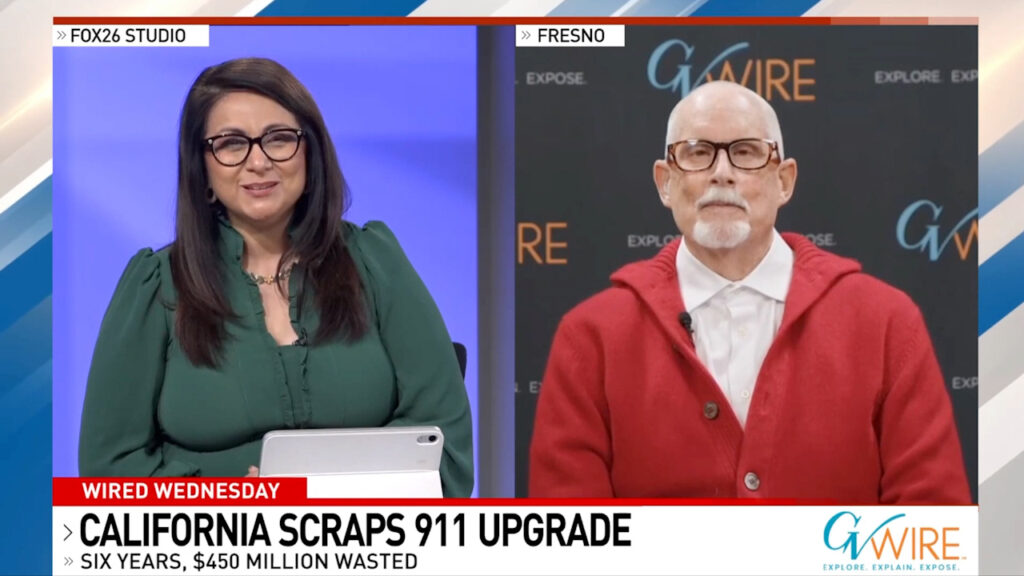Share
|
Getting your Trinity Audio player ready...
|
During the last half-century, logistics — receiving, storing, and transporting goods — became a dominant segment of Southern California’s economy.
As Asia — particularly China — evolved into a manufacturing colossus, the twin ports of Los Angeles and Long Beach saw an eruption of ship traffic, and the region’s interior sprouted a massive collection of warehouses and other facilities to transship imported goods.

Dan Walters
CalMatters
Opinion
A few data points illustrate the phenomenal growth of Southern California’s logistics industry.
Between 1980 and 2022, the Port of Los Angeles saw a 20-fold increase in container traffic, from fewer than 500,000 TEUs (shorthand for 20-foot equivalent units) to nearly 10 million TEUs. The neighboring Port of Long Beach experienced virtually identical growth.
When other commodities are included, such as petroleum and scrap metal, by 2020, Long Beach was handling nearly 80 million tons of cargo each year, and Los Angeles nearly 60 million. Combined they were processing 40% of the nation’s imports and exports.
Loading and unloading that cargo, transporting it by truck and train, and storing it created nearly 600,000 jobs, averaging $63,130 in wages, and nearly as many more in related sectors, according to a 2017 study by the Los Angles County Economic Development Corp.
Logistics Growth Meshed Perfectly With Immigrant Influx
The truly explosive growth of logistics in Southern California could not have occurred at a better time because, beginning in the 1970s, the region also experienced a massive influx of immigrants from other nations. A demand for dock workers, truck drivers, and warehouse workers helped Southern California absorb the population gains, especially after its other major economic sector, aerospace and military weaponry, collapsed in the early 1990s as the Cold War ended.
Despite its economic importance, there’s nothing sexy about logistics. It remained in the background, taken for granted, while less vital sectors such as entertainment and tourism became the region’s most visible symbols.
Politicians and the media paid attention to logistics only when it experienced problems, such as the gridlock of ships that occurred in 2021 and 2022 due to supply chain problems related to the COVID-19 pandemic.
Logistics Is Now a Political Target
In recent years, the Southern California logistics industry has become a political target, accused of clogging the region’s highways and polluting its air. Legislative and regulatory steps aim at reducing the industry’s social and environmental impacts but could make it uncompetitive in the cutthroat ambience of world trade.
John McCown, a senior fellow at the Center for Maritime Strategy, published an article last month suggesting that actions by California’s state and regional air quality agencies could reduce Southern California’s share of global trade.
Forcing the adoption of zero-emission trucks as the California Air Resources Board seeks, and imposing an overall emissions cap, as the regional air board proposes, increase operational costs that could make the twin ports unable to compete with alternatives, McCown argued, and damage the nation’s strategic position.
“Local governments and port authorities should not take actions that damage the national economy and national security,” McCown wrote. “Related to the latter, note that if China invades Taiwan, the California ports will be the primary gateway through which military sealift occurs.”
Don’t Take These Twin Ports for Granted
McCown’s warning was published as two unrelated events occurred that could increase ship traffic into Southern California ports. The Panama Canal has reduced its quota of ships due to drought’s effects on its fresh water supply, and shipments through the Suez Canal have plummeted due to attacks on ships in the Red Sea by Houthi militants.
It’s high time for California’s political leaders, including Gov. Gavin Newsom, to stop taking the twin ports for granted and help them maintain their strategic importance to the region, the state, and even the nation.
About the Author
Dan Walters has been a journalist for nearly 60 years, spending all but a few of those years working for California newspapers. He began his professional career in 1960, at age 16, at the Humboldt Times. CalMatters is a public interest journalism venture committed to explaining how California’s state Capitol works and why it matters. For more columns by Dan Walters, go to calmatters.org/commentary.
Make Your Voice Heard
GV Wire encourages vigorous debate from people and organizations on local, state, and national issues. Submit your op-ed to bmcewen@gvwire.com for consideration.


















